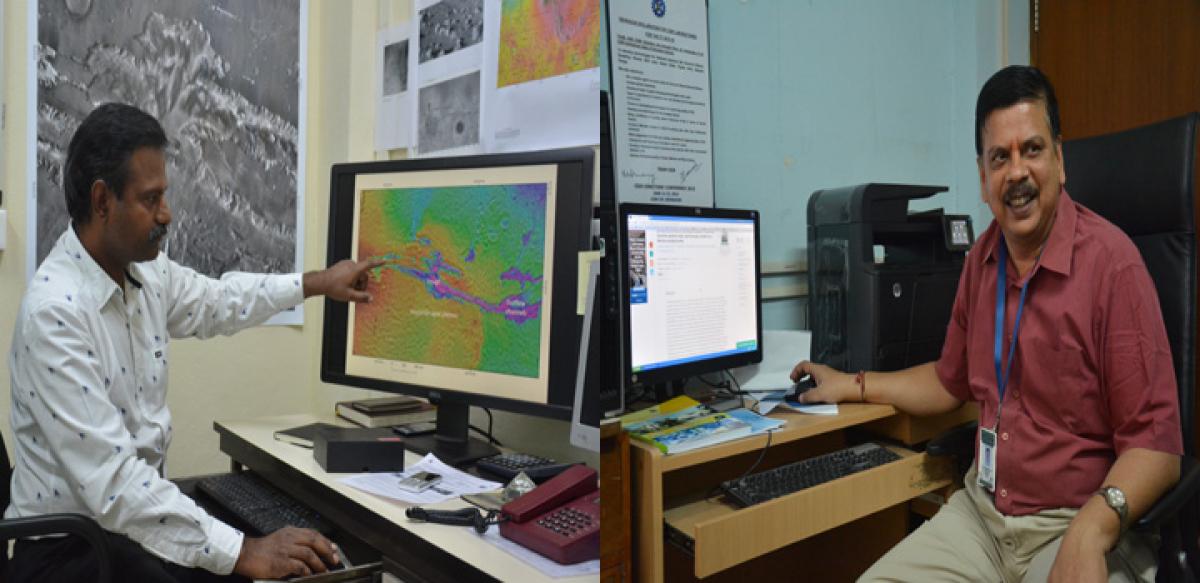Contributions of NGRI scientists for Martian surface replica

The recent discovery of a Mars surface replica in Matanumadh, Gujarat has caught the attention of the scientific community worldwide; the findings gain significance with Indian Space Research Organisation’s (ISRO) plan for a manned mission to the planet in future.
The recent discovery of a Mars surface replica in Matanumadh, Gujarat has caught the attention of the scientific community worldwide; the findings gain significance with Indian Space Research Organisation’s (ISRO) plan for a manned mission to the planet in future.
Many scientists from Space Applications Centre (SAC-ISRO) Ahmedabad and Indian Institute of Technology-Kharagpur have been studying the landscape of Matanumadh with keen interest. The role of the National Geophysical Research Institute (NGRI) in Hyderabad too has been crucial in determining the ‘terrestrial analogue’.
G Parthasarathy, chief scientist, NGRI who has been studying mineralogy of the Martian surface for the last five years says, “We study minerals using spectroscopy based on remote sensing imagery from the red planet. This site is relevant due to the existence of basalt and is unique as it is available on Mars and other planetary bodies.”
“This is the fourth site in the world that is similar to Martian surface. The other three sites are Death Valley, North America; Hawaii and Iceland,” he informs. While the study of mineralogy helps in determining similarities of surface, satellite imagery data from NASA, ISRO, European Space Agency and Mars Orbiter Mission-Mangalyaan is being studied to find out craters, water bodies, glaciers and even sand dunes on Mars.
Senthil Kumar, senior scientist, in-charge, Planetary Lab, NGRI says, “There is a 4,000 km long canyon there, similar to the Grand Canyon on Earth. There is a 6,000 km volcanic complex on Mars. A lake was formed 4,000 billion years ago called Valley network.”
“We are now understanding the canyon- Valles Marineris as a future exploration site,” he adds. The team is addressing how the planet is functioning today. “About 3,700 million years ago, sulphates formed on Mars and around that time the Canyon was shaped and a lot of cracks appeared on its surface,” explains Senthil as he shows us satellite imagery.
Senthil says, “A long time ago, there was an ocean on Mars that dried up due to a drastic drop in atmospheric pressure. Today, the planet is very cold and it also has glaciers on it.” The work done by these scientists goes a long way in determining the date of lakes and volcanoes, which helps in knowing what transpired on Mars a billion years ago. Through surface geology they determine the tectonic features on the planet and study on the possibilities of water.



















